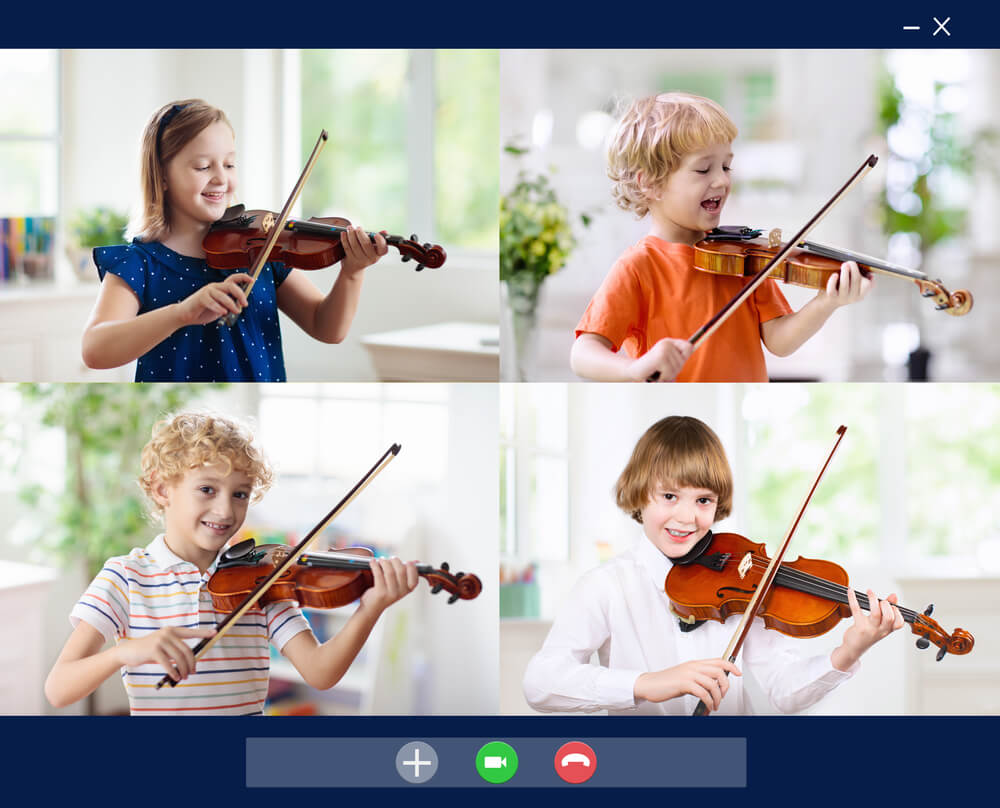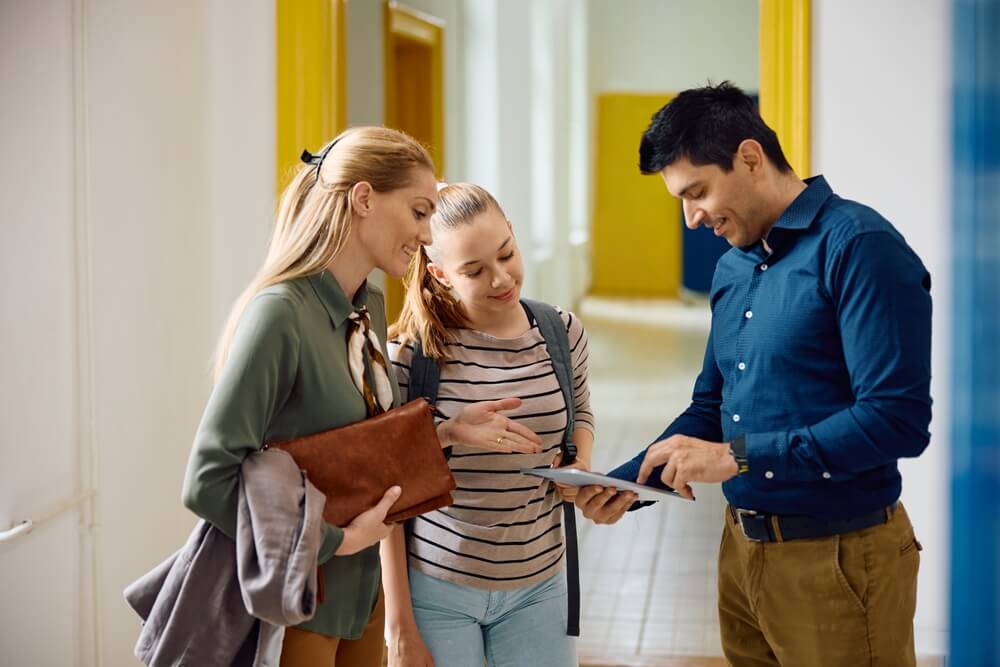K-12 Teaching Excellence: Maintaining Quality Through Virtual Solutions


Teaching for K12 is a challenging occupation. Teachers must not only relay knowledge of language arts, math, science, and social studies, but also keep children engaged while they learn these all-important subjects. Teachers also need to be aware of child development progress and mental health needs and provide positive support for struggling students. Furthermore, educational professionals often spend their free time doing lesson planning and even buying school supplies that the district can't afford to provide.
Given these facts, it's not surprising that the United States is facing an acute teacher shortage. Current labor statistics show that about 16% of instructors, many of whom are experienced teachers, leave their jobs each year. While half of these educators move to another school, the other half leave the field entirely. As a result, over 365,000 teaching positions are filled by educators who aren't fully qualified for their jobs. Some lack a bachelor's degree, others don't have certification, and still others don't have training in the specific fields they are teaching. Over 42,000 positions are vacant in spite of vigorous searches for qualified candidates to take on these jobs.
Given these facts, it's not surprising that many school districts are turning to virtual learning platforms to make up for a lack of in-person instruction. This is an ideal solution in many ways, as it gives districts access to certified teachers with the right experience and credentials to teach core subjects. It can also give schools access to electives such as World Languages, music, art, physical education, and test prep classes.
Even so, a virtual education set-up also comes with its own set of challenges. There are a number of steps district administrators need to take to ensure virtual teachers and education platforms meet learner needs.

Choose a Synchronous Learning Platform
There are two virtual education models to pick from. Asynchronous platforms offer pre-recorded teaching lectures along with reading/homework assignments to be completed in the classroom or at home. Some hail these platforms for their versatility in allowing learners to study at the time/place that best suits their needs. However, these platforms don't allow learners to build connections with a teacher and fellow students. Instead of getting answers in real-time, learners must watch the class, send in questions, and wait for the teacher to send back an answer. Children don't interact with their peers in person and so are unable to get to know others in their class. Not surprisingly, data from many studies have found that student engagement is significantly lower in solely asynchronous classes than it is in in-person or synchronous virtual classes.
Synchronous learning, on the other hand, helps children build relationships and foster a sense of community with teachers and fellow learners. This not only increases engagement but also improves learning outcomes. Synchronous online classes are livestreamed and typically include teaching tools and features such as an interactive whiteboard, shared screen capabilities, and pop quizzes. Teachers are able to gauge student comprehension during class and adapt the class mid-way to meet class needs. Children who have questions can get immediate answers; furthermore, they can hear fellow student questions and the teacher's answers to these questions.

Include Elective Classes in the Curriculum
One of the benefits of a virtual education set-up is that it gives schools access to teachers with specialized skills. Instead of just studying core subjects, learners can take courses in line with their interests and future career plans.
Electives play a vitally important role in shaping the lives of the next generation. They help kids discover and develop natural gifts and build confidence and identity. They boost self-esteem and inspire kids to want to come to school and learn new things. Electives also prepare the next generation for the future by giving them the life skills needed to further their studies, find a job, or become entrepreneurs.
What's more, the skills children develop when taking elective courses can also improve performance in core classes. A study by the George Mason University Arts Research Center found a direct connection between taking courses in music, dance, art, and drama and improved grades in middle school students. The American Psychology Association reports that high school students who take music courses perform better on math and science tests than high school students who did not join elective classes.

Preparing Students and Parents for a Virtual Education Platform
Virtual education tools and technologies are becoming increasingly commonplace in K-12 public schools and degree programs. Children and teens at all grade levels are familiar with the concept of studying online rather than in a physical, in-person environment. However, since many distance education courses are asynchronous, some may not be prepared for differences between pre-recorded classes that can be viewed anywhere and livestream classes taking place in a public school classroom. District educators should make sure that children who will be taking livestream classes in the upcoming school year or semester understand that:
- Classes will take place in the public school. Children will need to arrive on time, just as they would for a regular in-person class.
- Students will have opportunities to engage with teachers and classmates, building confidence and deepening their learning through interaction. This may include making a personal introduction at the start of the semester, asking and answering questions during class, and participating in breakout sessions and chat rooms on the virtual learning platform.
- Students and parents should know who to contact for class information and how to view student progress and test scores.
- Parents whose children use an IEP or 504 plan should know what accommodations are being made in class (or which special classes are being offered) so they can make informed educational decisions for their children and support the school's efforts to help special ed children reach their educational goals.
- All students and their family members should be aware of upcoming course offerings and the times for these courses. As they are livestreamed rather than pre-recorded, older learners who want to take elective courses will need to adjust their schedules to ensure they can participate in the classes that best suit their needs.
Why Work with Proximity Learning
Every single kindergarten, primary school, middle school, and high school student deserves a quality education, and Proximity Learning has the tools, technologies, and certified instructors needed to get the job done.
We offer a huge range of core classes and elective courses for K12 school students. All classes are livestreamed into public school classrooms to not only impart academic teaching but also give learners the opportunity to interact with others in a classroom setting. Furthermore, our class platform includes online tools that make learning fun and engaging for kids of all ages and walks of life.
Our trained professionals work with school teachers and district administrators to keep track of student progress and performance. Our team offers tech support and can adapt class schedules, delivery, and curriculum content to meet your needs. Contact us to find out more or to start the onboarding process for your school district.
Ready to take your District's
courses to the next level?
Learn why synchronous
learning dominates in our
comprehensive guide.

Download Now
Ready To Learn More?
Whether you have a question about our solutions or are interested in our services, don't hesitate to reach out to us here. We’ll get back to you as soon as possible.



